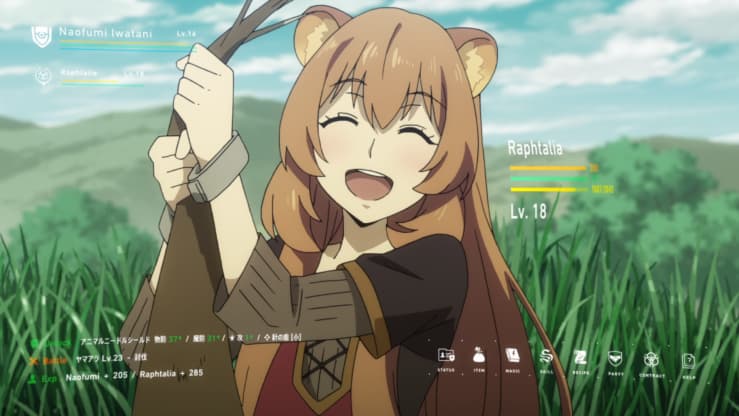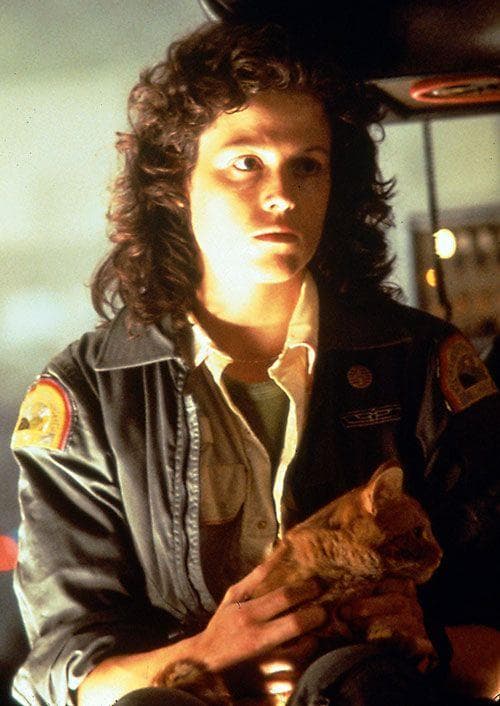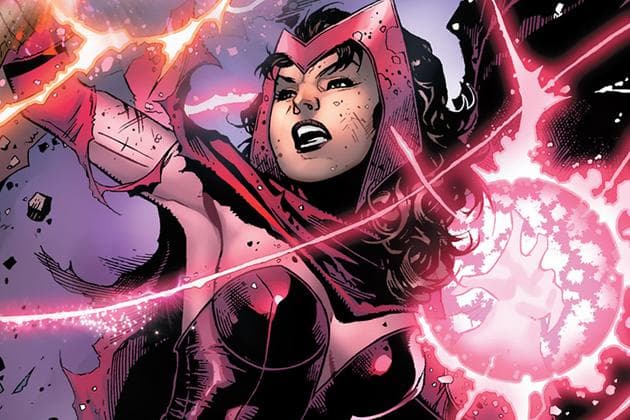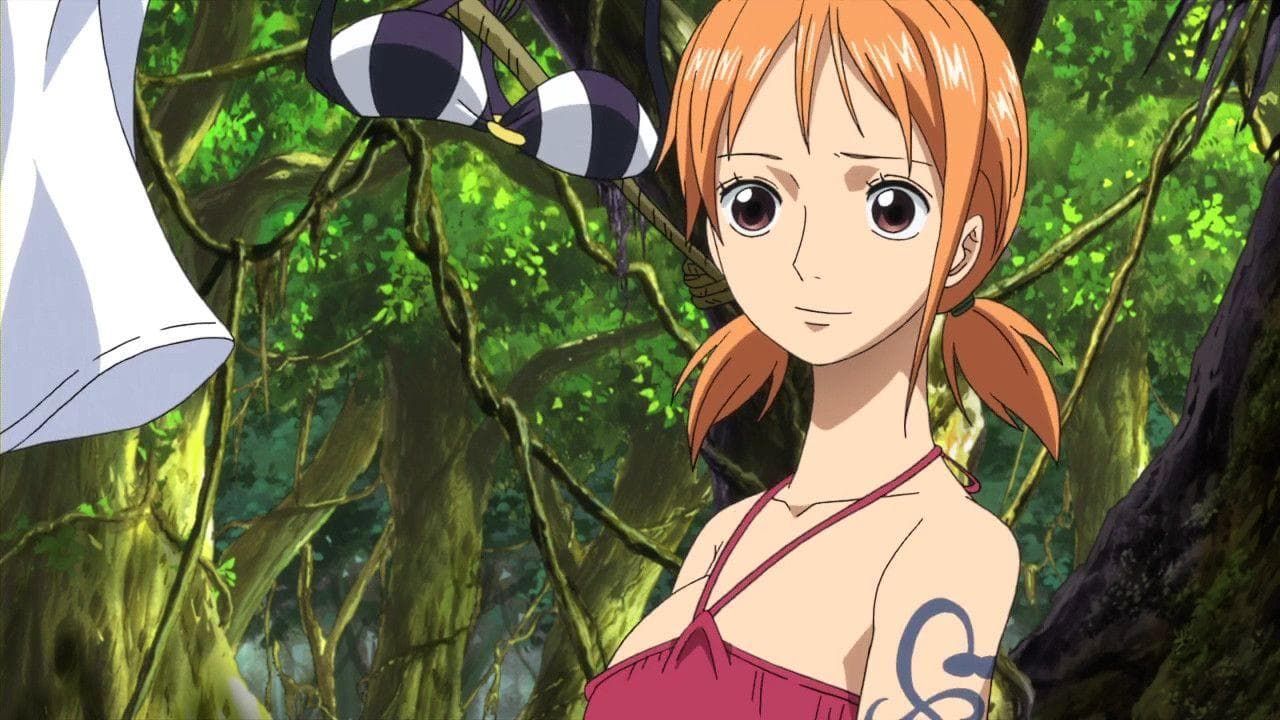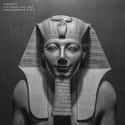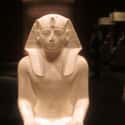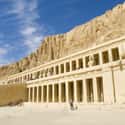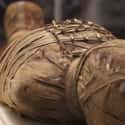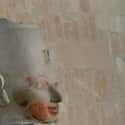(#8) She Is Responsible For Opening Major Trade With A Wealthy Neighboring Land
One of Hatshepsut's most famous accomplishments was opening up a trade route to the fabled land of Punt. Historians are unsure where Punt is in modern times but it was written about as a wealthy land located somewhere between Kenya and Saudi Arabia. It was known to be rich in incense and gold.
On her temple walls at Deir el-Bahri, a massive trade expedition Hatshepsut sent to Punt is depicted. Men brought back incredible riches, ranging from ivory to leopard skins and incense. In these images, the queen of Punt is intriguingly shown as an obese woman, possibly to represent the extreme wealth of her country.
(#3) She Took The Throne From Her Nephew/Stepson, Thutmose III
Thutmose II died around 1497 B.C.E. He fathered one son, Thutmose III, with a secondary wife before his death. As Thutmose III was still too young to rule when Thutmose II died, a regent was needed to rule until he matured. Hatshepsut was ready to step in having been well-groomed for governance.
As the years went on and Thutmose approached maturity, Hatshepsut wasn't inclined to loosen her grip on the reins of power. For a few years, she kept up the "regent" act, but seven years in, Hatshepsut abandoned all pretense and assumed the full title of a king. She was crowned pharaoh in her own right, co-ruling with Thutmose III only on paper.
(#12) The Next Pharaoh Tried To Erase Hatshepsut's Legacy
After she died, Hatshepsut's name was chiseled out of certain monuments bearing her moniker in an attempt to erase all memory of her. In ancient Egypt, eliminating someone's name meant their spirit would perish in the afterlife, so this was a huge insult and affront to the memory of a pharaoh.
More than likely her nephew/stepson Thutmose III was the one to order these erasures. In anger for Hatshepsult's usurping of his throne, this may have been his payback. More than likely, since Thutmose III allowed Hatshepsut a proper funeral and burial, he simply wanted his reign to be more regarded in history than his predecessor. Enough of Hatshepsut's impact remains for her to be remembered by history forever.
(#9) Her Funerary Temple Is Among Egypt's Most Epic Landmarks
Hatshepsut's biggest building project was her funerary temple, meant to celebrate her life for all eternity. Now called Deir el-Bahri, the complex is nestled in the cliffs near the Valley of the Kings. She adorned the walls of the temple with her biography, stories of her glorious birth and reign, and remnants of incense trees. The trees were probably hauled back from Punt, a journey also chronicled on her walls.
This was where she would make sure generations to come would remember her great deeds.
(#10) The Discovery Of Hatshepsut's Mummy Finally Shed Light On How She Died
In 2007, Hatshepsut's mummy was finally identified, and scholars now know she had quite a few ailments. From her mummy, specialists deduced she was obese and suffered from diabetes and bone cancer. The bone cancer is considered the culprit for her death at 50 years of age.
There is a more recent theory suggesting the queen used a face cream that would have, over time, poisoned her or even been connected to the cancer that may have killed her. While Egyptians were quite advanced in medicine, they used quite a few ingredients now known to be internally harmful.
(#7) She Wasn't Above Building Monuments To Herself To Improve Her Reputation
Pharaohs loved to build monuments - obelisks, temples to the gods, statues of themselves - and Hatshepsut was no exception. She put up four giant obelisks at the temple complex of Karnak in honor of Amun. She covered them in electrum (a gold-silver mixture) to reflect the rays of the sun, represented in Amun.
On one of the obelisks reads an inscription that can still be read today. Words that show how much Hatshepsut wanted to spin public perception of herself:
"I acted for him with a straightforward heart, as a king does for any god...Let not anyone who hears this say it is boasting which I have said, but rather say, 'How like her it is, she who is truthful to her father.' The god knows it in me [namely] Amun, Lord of the Thrones of the Two Lands...I am his daughter in very truth, who glorifies him."
New Random Displays Display All By Ranking
About This Tool
Hatshepsut was the only female pharaoh in ancient Egypt and the only woman who ever ruled Egypt. Hatshepsut Temple is located on the west bank of the Nile River in Luxor. This Queen's Temple has a history of more than 3,500 years and is currently recognized as a model of the full integration of ancient architecture and natural landscape in the world.
After her death, the successor pharaoh set out to wipe out the traces of Hatshepsut and ordered the destruction of many sculptures inscribed with her name and portrait. The random tool shares 12 things about the greatest female pharaoh in ancient Egypt.
Our data comes from Ranker, If you want to participate in the ranking of items displayed on this page, please click here.

